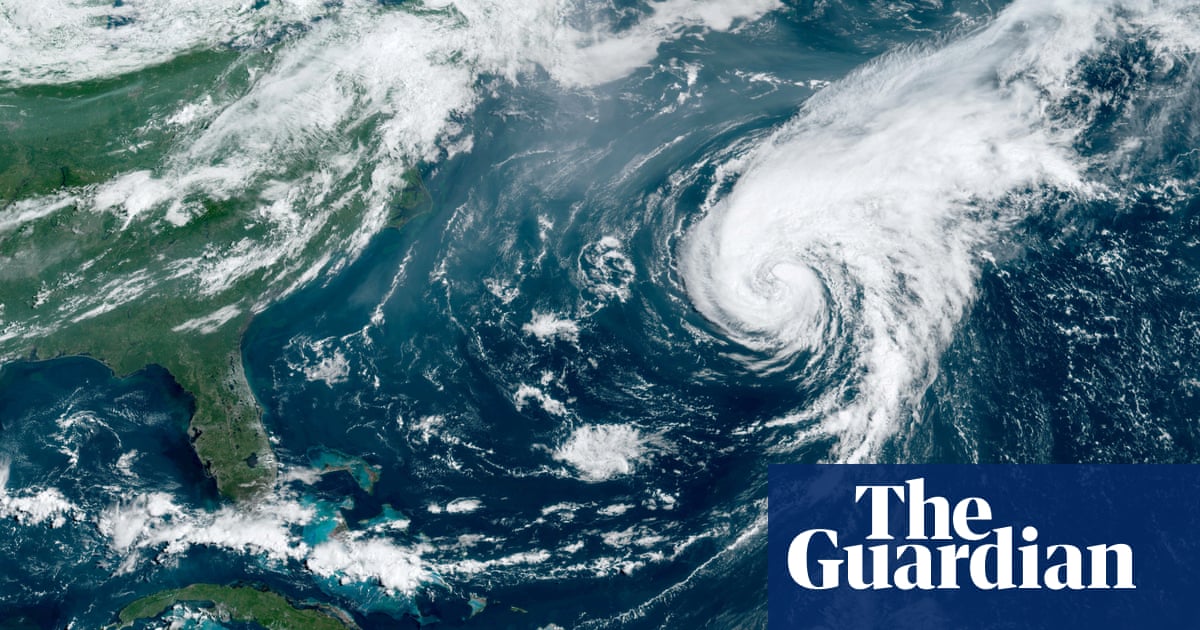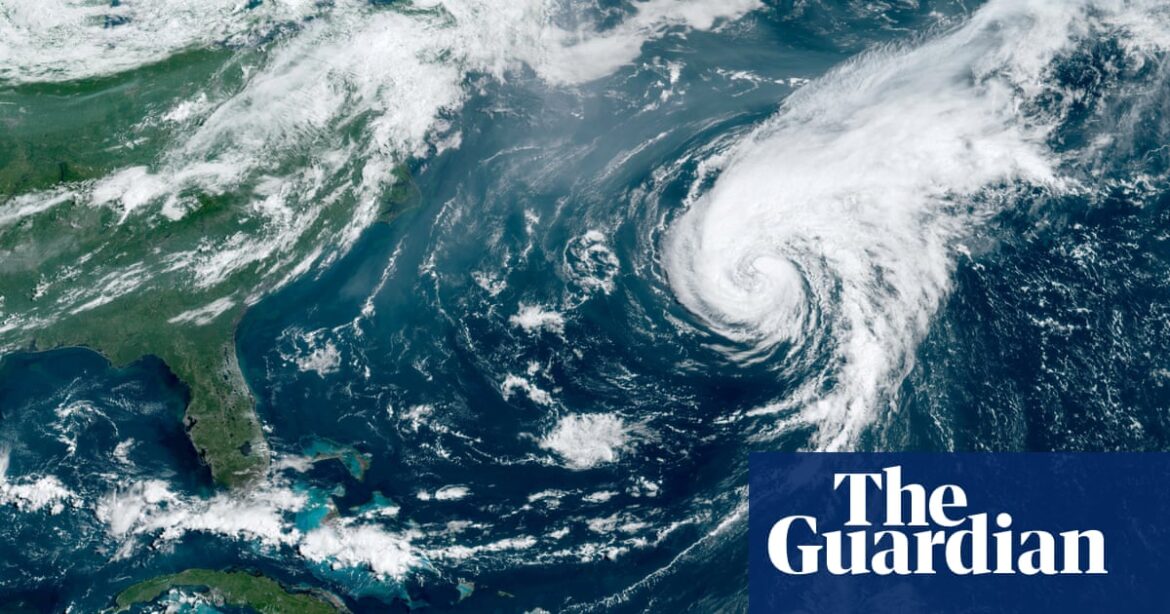
Tropical Storm Ernesto became a hurricane again on Sunday as it churned away from Bermuda and headed further out in the Atlantic, sending powerful swells toward the US east coast, generating rip currents associated with at least one death and prompting many rescues.
The US National Hurricane Center in Miami said Ernesto’s maximum sustained winds were 75mph (120km/h), just barely category 1 strength.
More strengthening was forecast before Ernesto weakens and becomes a post-tropical cyclone on Tuesday, the hurricane center said. The storm was centered about 520 miles (840km) south of Halifax, Nova Scotia, and was expected to pass near south-eastern Newfoundland late Monday and early Tuesday.
Swells generated by Ernesto were affecting portions of the Bahamas, Bermuda, the US east coast, as well as the Canadian Atlantic coast. Life-threatening surf and rip current conditions were likely in these areas during the next couple of days, the hurricane center said.
The US National Weather Service posted a coastal flood advisory and warned of a high risk for rip currents along the Atlantic coast through Monday evening, saying they “can sweep even the best swimmers away from shore into deeper water”.
A warning extended from Florida to the Boston area and portions of Maine.
In periods of high risk, rip currents become more likely and potentially more frequent, posing a danger to all levels of swimmers, not just inexperienced ones, said meteorologist Mike Lee in Mount Holly, New Jersey.
“It’s going to be really dangerous out in the water today,” he said.
At Manasquan Inlet in New Jersey, officials said a fisher was washed off the north jetty on Saturday but was quickly rescued by lifeguards. The victim had knee and back injuries and a possible concussion and was taken to a hospital, the lifeguard chief Doug Anderson told NJ Advance Media. And lifeguards rescued at least five other people.
In Ventnor City to the south, Senior Lt Meghan Holland of the city beach patrol said eight people were rescued.
Forecasters, citing local emergency management, said a 41-year-old man drowned on Saturday in a rip current at Surf City, North Carolina.
Two men drowned on Friday in separate cases on Hilton Head Island, South Carolina. But it was unclear whether rip currents were involved, the Island Packet of Hilton Head reported, citing a lifeguard services spokesperson.
Separately, heavy rains unrelated to the hurricane caused flooding in parts of western Connecticut on Sunday, closing roads, forcing water rescues and causing a minor mudslide. Flood waters swept two people into the Little River in the town of Oxford – one had been found dead as of Monday morning, and another remained missing, the local news station WTNH reported.
Officials were unable to immediately reach the area where the two people had been swept away because of high waters and the need to respond to other emergency calls, said Oxford’s fire chief, Scott Pelletier. Pelletier did not respond to a message from the Associated Press seeking additional details.
Videos posted on Facebook showed severe flooding in Oxford overtaking roads and homes, with at least one video showing a small building being washed downstream.
The rough surf spawned by Hurricane Ernesto contributed to an unoccupied beach house along the Cape Hatteras national seashore on North Carolina’s Outer Banks collapsing into the water on Friday evening. Seashore officials urged the public on Sunday to avoid beaches in parts of the village of Rodanthe where “substantial damage” to several oceanfront structures occurred. Debris cleanup was expected over the next several days.
Ernesto had weakened to a tropical storm late Saturday after bringing heavy rain and strong winds to Bermuda.
At a press conference on Sunday afternoon, Bermuda’s security minister, Michael Weeks, said the tiny British territory made it through the hurricane without any injuries or major incidents. “I want to express my gratitude to everyone for taking this storm seriously,” he said.
Source: theguardian.com



